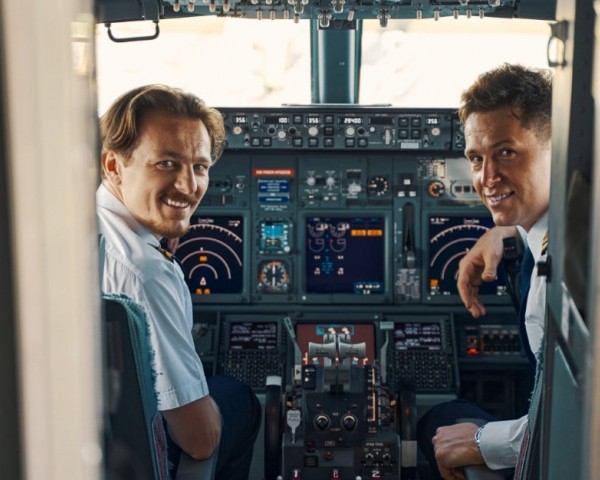Once considered a dream, being an airline pilot is encountering a fresh obstacle as 2025 dawns: a scarcity of qualified individuals to sit in the cockpit. Even Swiss Airlines find themselves struggling to fill pilot positions, and they’ve been forced to reactivate pilots who had already retired to keep their flight schedules on track.
Though the pilot salaries are quite attractive, especially in Switzerland which tends to lead the pack when it comes to pay, the need for demanding training, competitive markets, and operation challenges unlike any other are fundamentally changing the aviation workforce.
Switzerland Tops Global Pilot Salaries
A recent survey conducted by the ERI Economic Research Institute indicates pilot salaries remain high, particularly in Europe and North America. Switzerland is leading the way in this regard. Airline captains based in Switzerland typically earn approximately 150,000 Swiss francs annually (around $172,610). Following behind are Luxembourg ($146,809) and the United States ($132,569). Denmark ($127,515), Belgium ($122,930), Great Britain ($121,028), Canada ($112,169), Germany ($111,419), Australia ($110,314), and Norway ($109,352) are also among the countries that pay the most.
The high pilot salaries are indicative of the profession’s demanding nature, generally speaking. Pilots go through extensive training procedures. Moreover, external considerations enhance their value in the market. The fierce competition in the U.S. among different airlines, all vying for qualified pilots as a consequence of an extensive air travel network, is one factor driving wages upward, according to Insider Monkey. Switzerland’s challenging alpine terrain, along with frequent bouts of bad weather, necessitates a workforce of highly skilled pilots. This ultimately justifies their compensation.
The Pilot Shortage Crisis
Despite these tempting compensation packages, airlines across the globe are struggling with a shortage of pilots in the cockpit. The causes are multifaceted. An aging pilot workforce, a scarcity of young professionals who may be entering the field given the high training costs and lengthy certification procedures, as well as the persistent impact of pandemic-era disruptions (early retirements and reduced training pipelines) have all contributed to the issue. As an example, Swiss airlines are rehiring retired pilots now as a means of bridging the gaps. This trend is seen throughout the industry as air carriers scramble to keep up with rising travel demands.
Why High Pilot Salaries Aren’t Enough
Though competitive pay should, in theory, attract talent, the pilot shortage still lingers. It could be that the demanding nature of the job is a contributing factor. Not only that, but the considerable time and financial investments demanded during the training process might deter potential candidates as well. Furthermore, the high cost of living in countries such as Switzerland and Luxembourg may offset the appeal of those high salaries. In the U.S., the need for pilots to be able to navigate a very busy air network adds additional pressure. Meanwhile, the complex topography in Switzerland requires exceptional levels of skill, which narrows the pool of qualified candidates even further.
A Changing Aviation Landscape
The pilot shortage brings to light a key challenge for the aviation industry in general: the ability to balance the need for skilled professionals with the realities of what is often a demanding career path. High pilot salaries in countries like Switzerland and the U.S. show the importance placed on expertise. Nevertheless, this has not totally resolved the staffing crisis in the industry. Airlines are turning to various solutions, such as rehiring retirees, and the industry might also need to explore some long-term strategies, like subsidized training programs or more streamlined certification procedures, as a means of both attracting and keeping the next generation of pilots. It would appear that the dream of flying is, for now, both lucrative and increasingly difficult to maintain.

